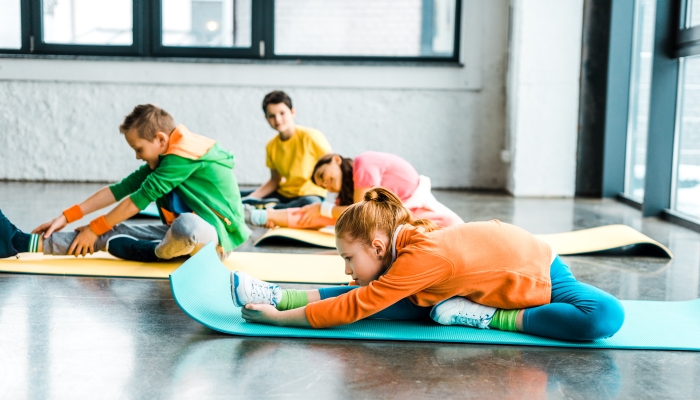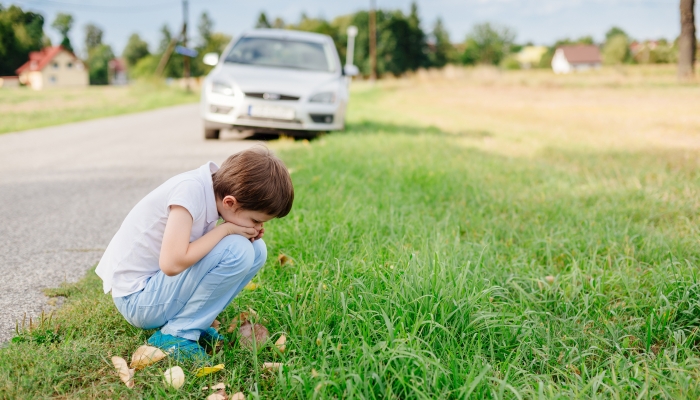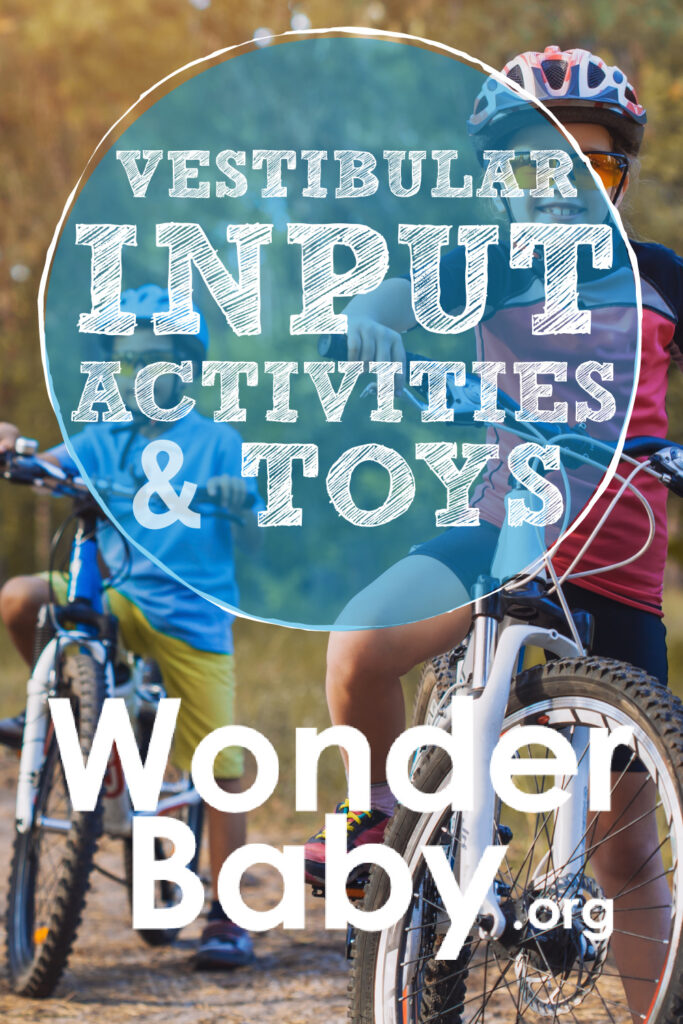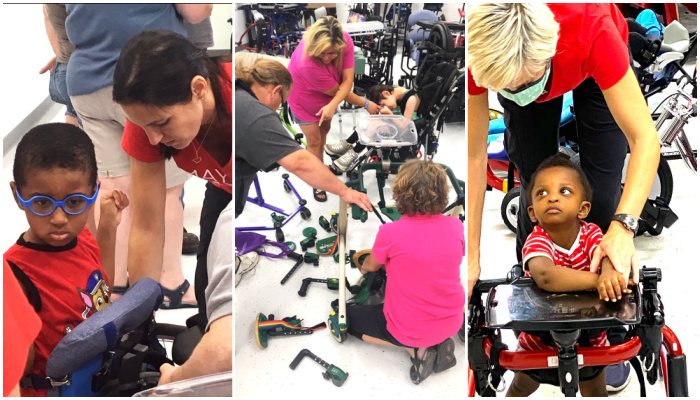10 Vestibular Input Activities and Toys

- Vestibular input is sensory information received in the inner ear and processed in the brain that leads to visuospatial perception.
- The vestibular system is interconnected with other pathways in the brain and affects postural control, coordination, balance, attention, and sensory regulation.
- Many play activities affect the vestibular system and can be used to improve your child’s sensory processing and motor development.
Have you ever noticed how your child will spin in circles until they fall and then jump back up to do it all over again?
What may seem nauseating to an adult is actually your child seeking vestibular stimulation, or vestibular input, to the inner ear. Repeated movement of the head helps children train their central nervous systems to develop spatial orientation, particularly as it relates to where their head is moving through space.
Vestibular Input: What You Need to Know
The vestibular system is a part of the neurological system that receives sensory input from the inner ear to detect the position and movement of the head. The vestibular system works together with other sensory systems to maintain postural control, balance, and coordination. Vision and proprioceptive input coordinate with the vestibular system to keep the eyes focused on a target while the body is moving and to keep the head and body in an upright position.
Fluid inside the inner ear accelerates when the head moves causing the movement of small crystals and the bending of tiny hair cells. This information about the speed and the direction of the head’s movement, combined with visual and proprioceptive input, causes the brain to activate muscles that keep the body in the best position to complete a task.
Vestibular information travels along the same nerve to the brain as auditory information. That is why you may notice both dizziness and muffled hearing when your child has an ear infection.
Why Is Vestibular Input Important in Child Development?
Sensory integration of the vestibular and visual systems and vestibular and proprioceptive systems is key to your child being able to maintain an upright posture, complete bilateral coordination activities, and work on functional tasks. Development of the vestibular system is therefore important for the development of gross and fine motor skills.
Problems with this single system can have far-reaching effects on cognition and emotion because the vestibular system works with many different parts of the brain—not only the areas affecting muscle activation.

How to Tell if a Child Has Vestibular Problems
Vestibular dysfunction can be caused by brain or spinal cord injury or disease, repeated ear infections, poor sensory integration or sensory processing disorder, and certain congenital disorders.
You may notice the following if your child has difficulty processing vestibular information:
- Poor balance
- Frequent falls
- Disorientation
- Dizziness or vertigo
- Difficulty maintaining a stable, upright posture
- Nausea, vomiting, or complaints of feeling sick after being on rides or swings
- Poor hand-eye coordination
- Ocular motor difficulties
- Delayed motor development
Children with vestibular dysfunction may seek or avoid sensory input, have difficulty regulating their emotions, and have trouble with visuospatial tasks. Finding the right amount of vestibular input to meet your child’s needs can go a long way toward improving their physical, cognitive, and emotional well-being.
Fun Activities That Promote Vestibular Input
There are many fun vestibular activities that can create a responsive vestibular system for your child. In general, activities that encourage head movements in any direction can improve your child’s vestibular processing.
1. Jumping
Jumping is a great way to get vertical input to the vestibular system! If your child is not old enough to jump on their own, holding them around the trunk and jumping them up and down or flying them through the air is as effective. For the older child, jumping on a trampoline and doing flips may be more stimulating to their sensory systems.
2. Gymnastics/Tumbling
Classes for gymnastics are often offered at a young age (even two or three years old!) and are a great way to have your child receive a variety of vestibular inputs in a safe setting. Many children are eager to learn all the fun moves they see at the gym. As your child becomes more confident and comfortable in their movements, their gymnastics coaches will increase the difficulty of the tumbling activities.
3. Playing on the Playground
For a free way to find some sensory challenges for your child, head to your local playground. It’s difficult to think of a piece of playground equipment that doesn’t provide vestibular input. From the swings to the teeter-totter and the zip line to the monkey bars, your child will find something to meet their sensory needs.
4. Early Motor Milestones
Infants are learning new skills constantly. Take advantage of tummy time, rolling, crawling, and early sitting and standing to provide lots of vestibular input for your baby. As a bonus, these are skills they are practicing and need to develop anyway!
5. Physical or Occupational Therapy
A doctor may refer your child to a specialist who treats vestibular disorders. Physical and occupational therapists can treat vestibular system dysfunction using specifically targeted vestibular activities in a controlled environment.
Your child’s physical or occupational therapist may have received specialty training to work in a specialized vestibular therapy with advanced treatment options. Even though this sounds very clinical, vestibular therapy can feel like playtime for a child!

Toys That Can Help Improve Vestibular Processing
1. Swings
There are so many great swings available today that provide sensory challenges and vestibular input to children of all ages. Either sensory swings or playground swings will work, and both moving forward and back or in circles is effective.
As an added bonus, the adult can control the amount of input, which can be increased as your child’s vestibular sense improves.
2. Bicycles
For the older child, bicycles are a thrilling way to develop vestibular sense. Acceleration on flat ground or hills provides great input to the vestibular system.
3. Scooter Boards
A scooter board gives your child some control over the sensory input they are receiving. Your child can roll forward, back, side to side, or spin on a scooter board in relative safety (though they may fall on their bottom!). Scooter board activities because they can include solo play, play with peers or siblings, or even with mom and dad.
4. Wobble Boards
Wobble boards are essentially balance boards made for children. Due to the unstable nature of these toys, it’s recommended that parents provide close guarding for safety. Wobble boards provide both challenging vestibular and proprioceptive input to your child in a fun way.
5. Jumpers/Bouncers
Time in “container” toys should be limited (think less than 30 minutes–1 hour per day) to encourage normal motor development. Yet, finding sensory activities for infants that don’t require direct help from a caregiver is tough!
Short amounts of time in a container toy allows an infant to work on vestibular processing without direct help while mom or dad are prepping dinner or completing another short task nearby.
Additional Tips for Your Child’s Vestibular Development
When allowing your child to engage in vestibular activities, it’s important to watch their reaction. Providing too much input too soon can lead to a worsening of symptoms and further dysregulation (e.g., distress, feeling ill, or an excited state).
An appropriate amount of input should improve your child’s attention, be calming, and gradually improve their tolerance toward increased vestibular input.
Even if your child looks like they could spin in circles all day or swing for an hour, it’s best to start slow until you can recognize their limits. If you’re not sure where to start, your child’s pediatrician or physical or occupational therapists are great references!
FAQs
At what age does the vestibular system develop?
The vestibular system begins to develop while your child is in the womb. Children continue seeking vestibular input throughout childhood as they develop their sensory systems. The vestibular system is often fully developed by middle childhood (~10 years of age).
What happens to the vestibular input with age?
The vestibular system, like many body systems, begins to decline in old age. A significant decline in vestibular function may be a sign of other neurological disorders like dementia, Parkinson’s, or stroke. A lowered ability to process vestibular information can lead to problems like falling or getting lost.
How long does vestibular input last?
The effects of vestibular input may last minutes to a few hours, depending on your child’s sensitivity and the amount of input provided. If the effects of vestibular input last more than a few minutes, your child has likely been overstimulated.
Long-lasting negative effects may include headaches, nausea, dizziness, and altered perception. Positive long-lasting effects include improvement in focus, performance of motor skills, and sensory regulation.

The information WonderBaby provides is not intended to be, and does not constitute, medical or other health advice or diagnosis and should not be used as such. Always consult with a qualified medical professional about your specific circumstances.
Related Posts

Special Needs
5 Spring Cleaning Tips for Families of Children with Disabilities
Spring cleaning is an opportunity to create a more accessible, organized, and supportive space for your child with disabilities. Declutter, deep clean, and refresh!

Visual Impairment
The Gift of Understanding: How a Young Child Helps His Blind Father Navigate Life
When a parent is blind, it’s natural for people to wonder how their sighted child will adapt. Will they struggle to understand their parent’s needs? Will they feel burdened by...

Assistive Technology, Support
May We Help: Engineering Independence for People with Disabilities
May We Help is dedicated to designing and building custom solutions that help individuals of all ages achieve mobility, access, and independence, all at no cost.